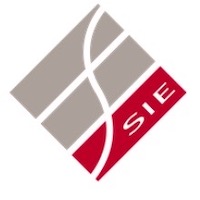Cyclic fatigue resistance of WaveOne Gold instrument with different amplitudes of axial movement: a dynamic study

All claims expressed in this article are solely those of the authors and do not necessarily represent those of their affiliated organizations, or those of the publisher, the editors and the reviewers. Any product that may be evaluated in this article or claim that may be made by its manufacturer is not guaranteed or endorsed by the publisher.
Accepted: 22 June 2021
Authors
Aim: Single-file reciprocating instruments were launched, aiming to diminish the risk of instrument separation. It operates in an in-and-out dynamic with an amplitude of approximately 3-4 mm. This study evaluated the impact of different amplitudes of axial movement in the dynamic cyclic fatigue resistance of the WaveOne Gold reciprocating file.
Materials and Methods: Forty-five WaveOne Gold 25.07 were divided into three different groups (n=15) according to the amplitude of axial movement of choice. In the G-2.5 group, the instruments were used in an in-and-out amplitude of 2.5 mm; in the G-5 group, the instruments were used in an in-and-out amplitude of 5.0 mm, and in the G-7.5 group, the instruments were used in an in-and-out amplitude of 7.5 mm. All instruments were tested in a simulated canal notched in metallic block, with 9.04 mm in its cervical portion, 13.3 mm in its apical portion, and curvature of 2.5 mm and 69°. The axial movement was applied with a back-and-forth speed of 2.5 mm/s during the dynamic cyclic fatigue test until the fracture was noticed. All of the tests were performed at a controlled temperature of 36 ± 1 °C and under oil lubrication. Then, the time to fracture (TTF/s), the number of cycles to fracture (NCF), and the length of the separated fragments were registered. The level of significance was set at 5%.
Results: The TTF/s was 11.40 ± 9.83, 15.00 ± 7.46 and 22.33 ± 8.76 for G-2.5, G-5, and G-7.5, respectively. The NCF was 57.00 ± 49.13, 75.00 ± 37.32, and 111.67 ± 43.82 for G-2.5, G-5, and G-7.5, respectively. For both TTF/s and NCF, G-7.5 was higher than G-2.5, and G-5.0 was similar to both groups (P< .05). The lengths of the fragments were 10.27 ± 1.07, 10.37 ± 0.66, and 10.58 ± 0.77 for G-2.5, G-5, and G-7.5, respectively. There was no difference among the groups in regards to the length of the fragments (P>.05). The SEM images showed characteristics related to cyclic fatigue.
Conclusions: It can be concluded that in-and-out movements affect the dynamic cyclic fatigue resistance of the WaveOne Gold reciprocating instrument. Appropriate pecking motions in the root canals are recommended to prevent the breakage of NiTi reciprocating instruments.
How to Cite

This work is licensed under a Creative Commons Attribution-NonCommercial 4.0 International License.











